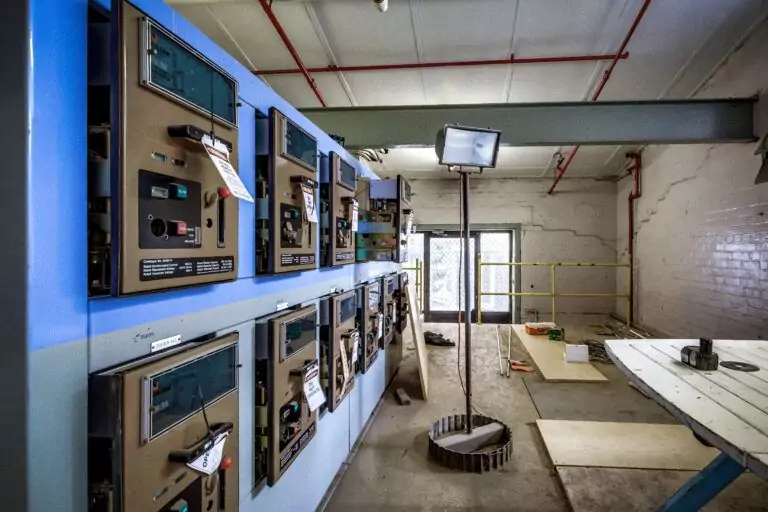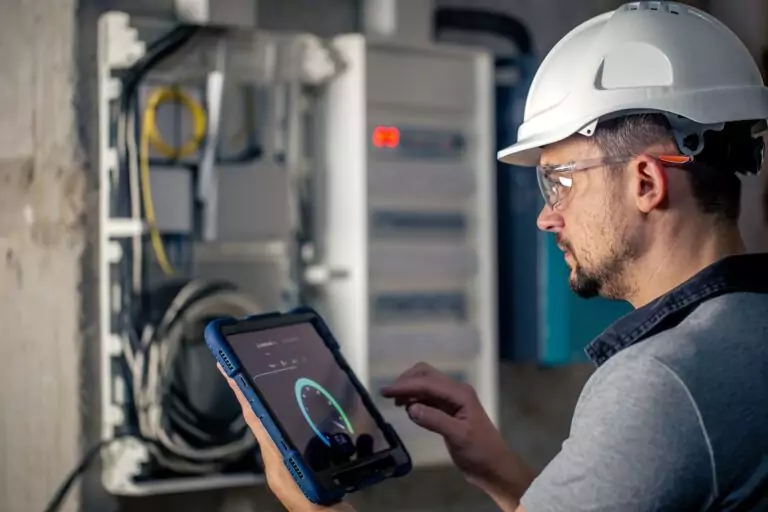Welcome to our deep dive into the world of electrical engineering portfolios! Whether you’re a seasoned professional or just starting out, having a portfolio is a game-changer in showcasing your skills, projects, and all the amazing things you’ve accomplished so far. It’s not just a collection of work; it’s a reflection of your journey, expertise, and the unique value you bring to the table.
In a competitive job market, a standout portfolio can be your ticket to catching the eye of potential employers or clients, helping you to not only land that dream job but also to carve out a path for continuous professional growth. So, what goes into crafting an impressive portfolio, and how can you organise it to highlight your best work? Stick around as we explore these questions, offering insights and tips to help you build a portfolio that truly represents the best of your abilities and sets you up for success in the electrical engineering field.
Let’s get started on creating a portfolio that opens doors to exciting electrical engineering job opportunities and propels your career forward!
Why Do Electrical Engineers Need a Portfolio?
Electrical engineers, much like professionals in other fields, greatly benefit from having a portfolio. This collection of work not only showcases their technical skills, projects, and accomplishments but also serves as a tangible representation of their career journey and expertise. The primary reason electrical engineers need a portfolio is to enhance their job application and interview process.
A well-crafted portfolio can make a significant difference in a competitive job market, enabling engineers to stand out from other candidates by demonstrating their practical experience, problem-solving abilities, and project management skills in a clear and organised manner. Moreover, a portfolio allows electrical engineers to effectively communicate their value to potential employers or clients. It provides a visual and detailed account of their contributions to past projects, including design work, innovative solutions, and successful outcomes.
This direct evidence of their capabilities can be more convincing than a resume or cover letter alone, helping to secure job offers or project contracts. Additionally, portfolios are not static; they evolve over time. Continuous update and reflection on one’s work foster professional growth, helping engineers to identify areas for improvement, new learning opportunities, and career development paths.
It encourages a proactive approach to career planning, making it easier for engineers to set and achieve professional goals. In summary, a portfolio is an indispensable tool for electrical engineers. It not only boosts their employment prospects by showcasing their skills and achievements in a compelling way but also supports their professional development and career advancement in the long term.
What Should be Included in an Engineer’s Portfolio?
An engineer’s portfolio should be a comprehensive showcase of their capabilities, featuring a variety of elements that highlight their expertise and achievements. By carefully selecting and organising these components, an engineer’s portfolio not only demonstrates their technical abilities but also their growth and evolution as a professional, making it a powerful tool in career advancement.
Projects
Projects are the foundation of an engineer’s portfolio, demonstrating their capability to navigate complex problems. They should showcase a blend of individual achievements and team collaborations, emphasising innovative solutions and successful project completions.
Design and Implementation
Detailing the engineer’s involvement in designing and implementing projects provides insight into their problem-solving skills, design rationale, and application of theoretical knowledge to real-world scenarios.
Research and Development
Incorporating research and development activities demonstrates an engineer’s commitment to advancing the boundaries of their field. Key highlights include contributions to innovative projects, academic publications, and the development of new technologies.
Technical Skills
A list of technical skills demonstrates the engineer’s versatility and proficiency with industry-standard tools and methodologies, indicating their preparedness to address a variety of tasks and challenges.
Programming Languages
Proficiency in programming languages such as C++, Python, or MATLAB should be emphasised, showcasing the engineer’s ability to develop software solutions, automate tasks, analyse data, or control hardware.
Circuit Simulation Tools
Experience with circuit simulation tools, such as SPICE, Multisim, or Eagle CAD, indicates an engineer’s capability in designing, testing, and troubleshooting electronic circuits and systems prior to physical prototyping.
Certifications
Certifications are critical, serving as recognised benchmarks of an engineer’s skill and knowledge, and demonstrating a commitment to professional development.
Professional Engineer (PE) License
A PE License signifies that an engineer has met high standards of competency and professionalism, authorising them to sign off on project plans and documents.
Certified Energy Manager (CEM)
The CEM certification underscores specialised knowledge in energy management, highlighting an engineer’s ability to enhance energy efficiency, reduce costs, and support environmental sustainability.
How to Organise an Engineer’s Portfolio?
Organising an engineer’s portfolio effectively is crucial for showcasing their skills and projects in a manner that is both coherent and compelling. A strategic organisation ensures that potential employers or clients can easily navigate the portfolio, appreciating the breadth and depth of the engineer’s expertise and achievements.
By Project Complexity
Organising a portfolio by project complexity highlights an engineer’s progression in tackling increasingly sophisticated challenges. It illustrates their growth and ability to navigate complex engineering tasks with ease.
Beginner to Advanced
Arranging projects from beginner to advanced levels showcases the engineer’s journey of acquiring and honing their skills. This layout provides a clear narrative of their professional development and expertise expansion.
By Skill Set
Categorising projects by skill set emphasises the engineer’s specialised areas of expertise, allowing viewers to quickly discern the engineer’s strengths and specific interests within electrical engineering.
Analogue and Digital Circuits
Featuring projects that focus on analogue and digital circuits demonstrates the engineer’s comprehensive understanding of and proficiency with various types of circuitry, a core competency in electrical engineering.
Power Systems
Including projects related to power systems underscores the engineer’s knowledge in designing, managing, and optimising large-scale electrical systems. It highlights their capability in a crucial sub-discipline of electrical engineering, showcasing their readiness to tackle industry-specific challenges.
Examples of Projects to Include
An engineer’s portfolio should feature a diverse array of projects that collectively showcase a broad spectrum of skills, innovative problem-solving capabilities, and technical proficiencies. Collectively, these projects offer a comprehensive view of an engineer’s capabilities, spanning from theoretical knowledge to practical applications in real-world scenarios.
Circuit Design Projects
Circuit design projects demonstrate an engineer’s foundational skills in creating functional electronic systems, showcasing their ability to design efficient and reliable circuits.
Microcontroller-based Systems
Microcontroller-based systems highlight the integration of software and hardware, illustrating an engineer’s skill in developing applications that control or interact with physical devices.
Analogue Audio Amplifiers
Analogue audio amplifiers showcase specialised knowledge in sound engineering, emphasising an engineer’s ability to design systems that enhance audio quality and performance.
Software Projects for Hardware
Software projects for hardware illustrate an engineer’s proficiency in programming languages and their application in controlling or improving hardware functionality.
Embedded System Programming
Embedded system programming projects indicate a deep understanding of software that directly interacts with hardware, showcasing the ability to optimise and control device operations.
PCB Design Software Projects
PCB design software projects showcase an engineer’s skills in electronic design automation (EDA), demonstrating their ability to create intricate printed circuit board (PCB) layouts for advanced electronic systems.
Renewable Energy Projects
Renewable energy projects underscore an engineer’s commitment to sustainability and innovation, demonstrating their involvement in developing solutions that leverage renewable resources.
Solar Power Systems
Solar power systems projects illustrate an engineer’s expertise in harnessing solar energy, showcasing their ability to design and implement efficient solar energy solutions.
Wind Energy Conversion Systems
Wind energy conversion systems projects highlight an engineer’s skills in converting wind energy into usable electrical power, demonstrating their contribution to sustainable energy solutions.
Tips for Showcasing Projects
When showcasing projects in an engineering portfolio, the focus should be on clarity, impact, and relevance. Utilising visuals and schematics, such as circuit diagrams and PCB layouts, can significantly enhance understanding and engagement.
This approach not only demonstrates technical proficiency but also problem-solving skills and creativity. Tailoring content to align with specific job requirements or industry trends can further increase the portfolio’s relevance to potential employers or clients, making it a powerful tool in advancing one’s career.
Use of Visuals and Schematics
Incorporating visuals and schematics can dramatically enhance the comprehension and appeal of a project, providing a clear and immediate understanding of complex concepts.
Circuit Diagrams
Circuit diagrams serve as essential tools for illustrating the electrical design and functionality of a project, offering a detailed view of the components and their connections.
PCB Layouts
PCB layouts showcase the practical application of circuit designs, highlighting the engineer’s ability to translate theoretical designs into real-world hardware.
Brief Project Descriptions
A concise project description sets the context, outlining what the project entails, its purpose, and the specific role of the engineer within it.
Objectives and Challenges
Detailing the objectives and challenges encountered during a project demonstrates the engineer’s problem-solving process and their ability to navigate obstacles.
Solutions and Technologies Used
Highlighting the solutions implemented and the technologies used not only showcases technical proficiency but also innovation and the ability to apply knowledge effectively in practical scenarios.
How to Use a Portfolio in Job Applications
In job applications, an engineer’s portfolio serves as a critical tool to differentiate themselves from other candidates by tailoring content to job requirements and highlighting relevant projects and skills. This strategic approach ensures that potential employers see a direct correlation between the engineer’s experiences and the job’s needs. By carefully selecting projects that align with the specific technical and creative demands of the position, candidates can more effectively demonstrate their suitability and readiness for the role.
Tailoring Content to Job Requirements
Tailoring content to match job requirements involves selecting projects and skills that directly relate to the position’s needs. This approach demonstrates an understanding of the role and how the engineer’s specific experiences make them a suitable candidate.
Highlighting Relevant Projects and Skills
Highlighting relevant projects and skills means emphasising work that showcases the candidate’s proficiency in areas critical to the job. This includes projects that solved similar problems, utilised necessary technologies, or required comparable skill sets, thereby proving the engineer’s capability to excel in the role.
Maintaining and Updating the Portfolio
Maintaining and updating an engineering portfolio is a dynamic process that reflects an engineer’s ongoing professional development. This proactive approach not only demonstrates an engineer’s commitment to their craft but also positions them as adaptable and forward-thinking professionals in the eyes of potential employers or clients.
Adding New Projects
Incorporating new projects into the portfolio showcases an engineer’s commitment to continuous learning and growth. It highlights recent work, reflecting the engineer’s evolving expertise and ability to tackle current challenges in the field.
Updating Skills and Certifications
Regularly updating skills and certifications ensures the portfolio remains current and relevant. This includes adding any new programming languages learned, tools mastered, or professional certifications achieved, demonstrating the engineer’s ongoing professional development and adaptability to industry changes.
Showcasing Your Expertise with Precision and Purpose
Creating a standout portfolio is one of the most effective ways for electrical engineers to illustrate their technical skills, project impact, and professional growth. This article has explored the essential components, organisation strategies, and project examples that make an engineering portfolio a powerful tool for career advancement. Whether you’re applying for a new role or pitching to a client, your portfolio is your opportunity to tell your story with clarity and confidence.
At Vista Projects, we understand the value of meticulous design and technical documentation. It’s how we deliver quality engineering solutions across complex energy and infrastructure projects. We welcome electrical engineers who bring both technical expertise and storytelling skills to their work.
Looking to apply your engineering talents where they make the biggest impact? Connect with Vista Projects and bring your portfolio to life on projects that shape the future.









